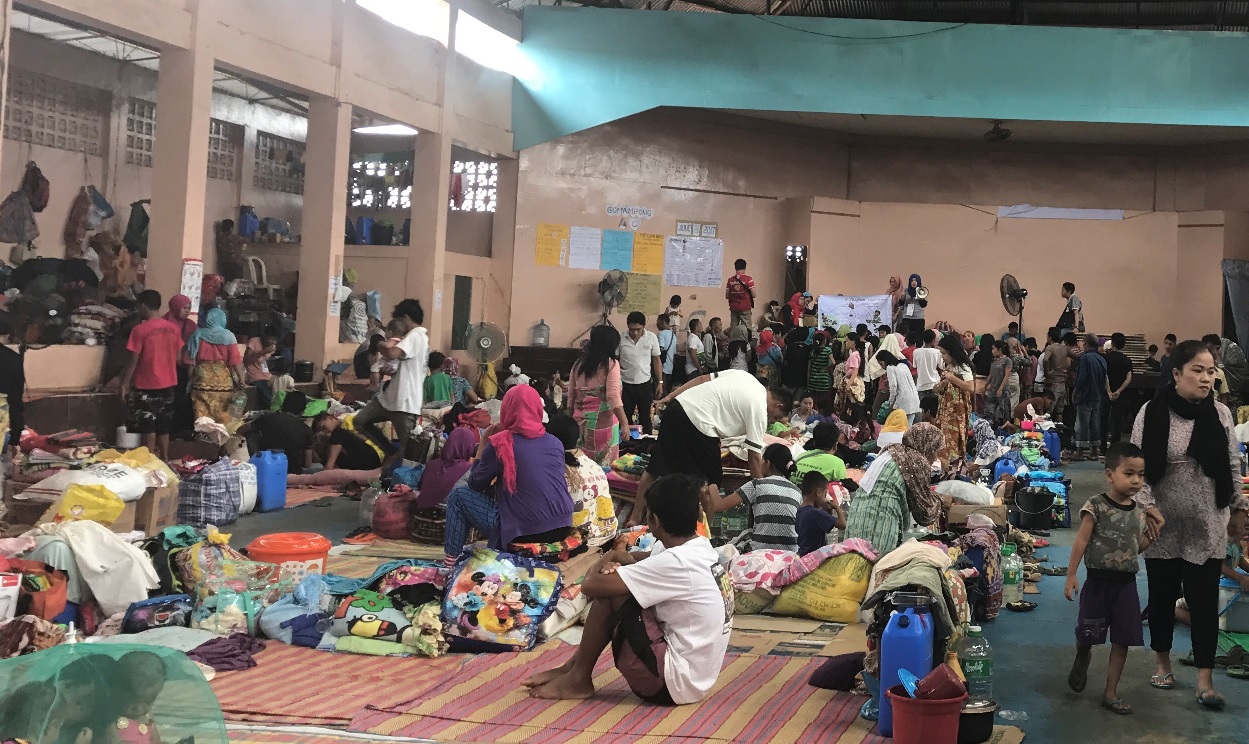
Over 350,000 displaced in Marawi conflict in need of continued humanitarian assistance
More than a month after fighting erupted between the Government and a non-state armed organization, the Maute Group, armed conflict continues in Marawi City. The violence has had tragic consequences for those affected in Marawi and its surrounding regions. According the the Department of Social Welfare and Development, as of 29 June, more than 350,000 have been forced to flee and are waiting for the violence to end so they can return home. A majority of the internally displaced persons (IDPs) are staying with relatives and friends in surrounding municipalities, while about five per cent are staying in evacuation centres in Lanao del Norte, Misamis Oriental, and Lanao del Sur.
Residents still stranded in Marawi City
Hundreds of residents are reportedly still trapped in the city and unable to secure help. On 25 June, the military declared a unilateral humanitarian ceasefire in Marawi City, allowing residents to celebrate the end of Ramadan and receive relief assistance. Six civilians were rescued, and after the eight-hour ceasefire, gunfire resumed.
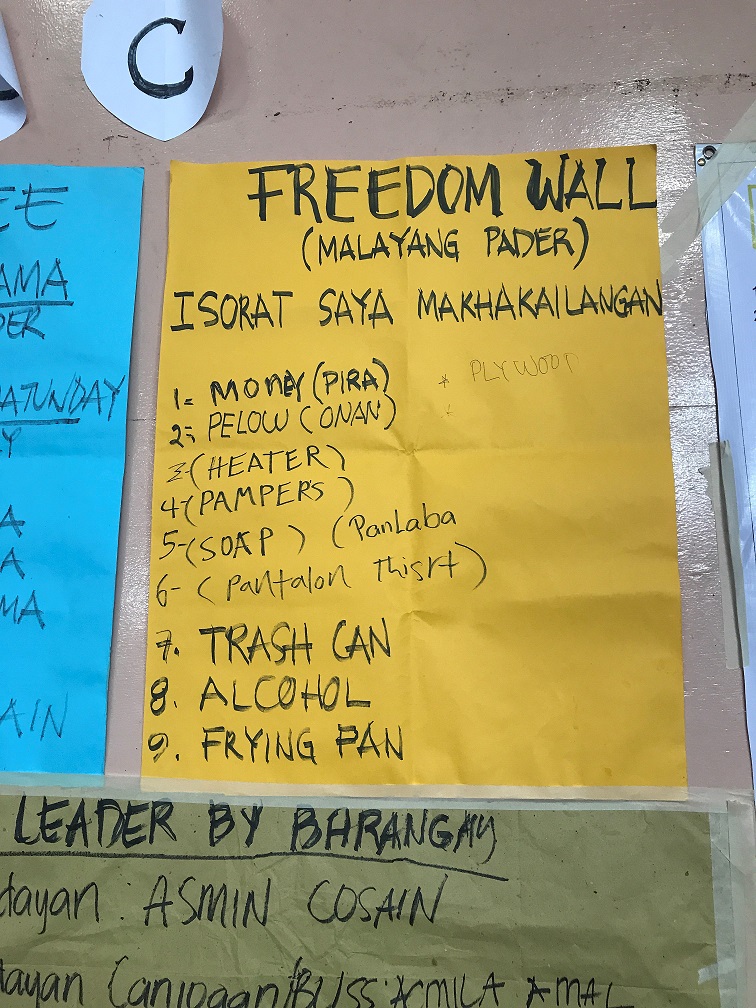
Credit: OCHA/M. Malang Balo-i, Lanao del Norte (22 June 2017) - IDPs write their needs on a poster at the Balo-i Gumampong Cultural Center evacuation centre.
Concerns and urgent needs as conflict continues
The Government mobilized swiftly to assist those affected by the conflict, and is leading the humanitarian response. With evacuation centres filled to capacity, urgently needed are clean water supplies and access to improved sanitation facilities. The National Disaster Risk Reduction and Management Council (NDRRMC) reports that there is a need for better coordination between camp managers and relief assistance donors, goods distribution and IDP activities inside evacuation centres. Home-based IDPs in Iligan City are asking for kitchen kits, blankets, sleeping mats, mosquito nets and hygiene kits.
Prolonged displacement also threatens food security, health and protection risks with nutrition interventions for the malnourished, medicine and clean water supply being among the most urgent continuing needs. There are reports of upper-respiratory tract infection, acute respiratory illness, skin diseases, hypertension and diarrhoea. Confirmation of several cases of cholera triggered a strengthened health surveillance and response by the Department of Health. There is also a reported need for health personnel in ARMM areas to deliver health services to evacuation centres.
Needs of vulnerable populations
Women and children could potentially be exposed to exploitation and abuse. There have been reports of grave child rights violations such as use and recruitment of children in the fighting. Other protection issues of concern include family unity, absence or incomplete registration of displaced persons, and freedom of movement for those without identification. Psychosocial care is also needed for children and families who experienced or witnessed violence. An estimated 86,000 public and private school students are struggling to continue their education because of the conflict. According to response cluster reports, there is a need for women- and child-friendly spaces. They also need lighting, bedding, mosquito nets and dignity kits. Elderly IDPs are suffering from lack of sleep and limited access to sanitation facilities.
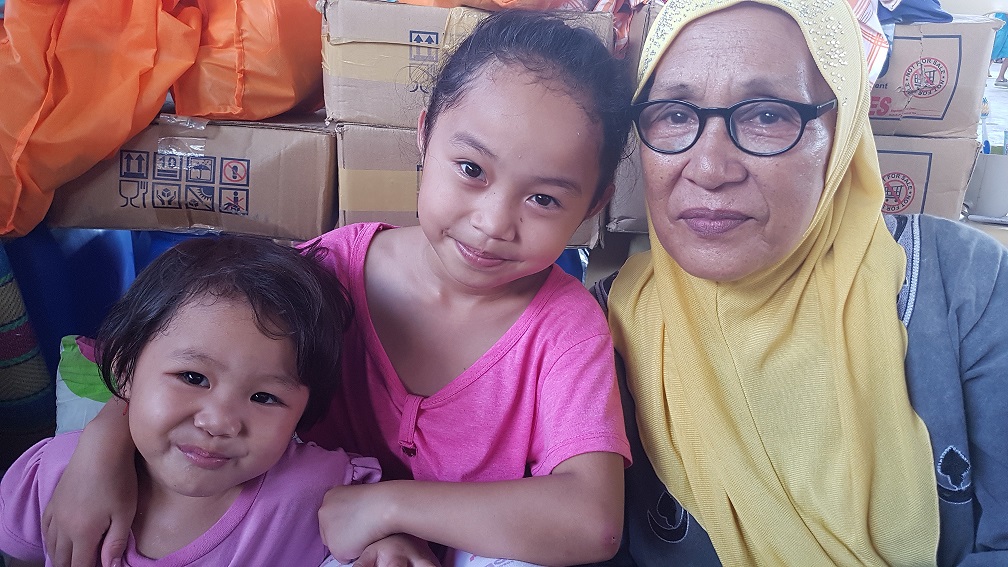
Credit: OCHA/R. Caballero Iligan City, Lanao del Norte (20 June 2017) - A woman with her two grandchildren in an evacuation centre. She is worried about her four siblings who are stranded with their families in Marawi City. She also wonders whether her home is still standing when she returns. There is no privacy and they have been sleeping on the ground. "It is painful to be an IDP," she says.
Planning for return after conflict ends
With parts of Marawi City reportedly in ruins, there is a need to plan for the clearing of debris. There is a high risk of unexploded devices among the ruins. The Swiss Foundation for Mine Action is conducting mine risk education in evacuation centres. The ARMM Regional Planning and Development Office have prepared a post-conflict recovery and rehabilitation plan for Marawi City which they plan to link with other rehabilitation plans for surrounding regions.
Continued humanitarian assistance needed
Several UN agencies, together with international and national non-governmental organizations are assisting local authorities with relief efforts for those displaced by the conflict. The Mindanao Humanitarian team, composed of UN agencies, international and national non-governmental agencies and civil society organizations, is supporting the Government-led humanitarian response. The Philippine Red Cross with the support of the ICRC is currently the only humanitarian organization that has access in Marawi City. Continued humanitarian assistance is needed as long as the conflict prevents the displaced from returning home in a safe and dignified manner.
Continued humanitarian assistance is needed as long as the conflict prevents the displaced from returning home in a safe and dignified manner.
Breaking the impasse: a new study tackles the issue of protracted internal displacement
In 2016, conflict in the Philippines resulted in the displacement of over 250,000 people. This year, armed conflict in Marawi has far eclipsed this, with over 350,000 displaced. As the fighting continues and with almost the entire commercial district in ruins, the lives of those unable to return home are stalled.
The scenario is unfortunately all too familiar as prolonged displacement creates an impact not only in Mindanao but globally. The number of IDPs worldwide has reached an alltime high, as an increasing number of IDPs remain displaced for years or even decades. Tens of millions of IDPs are dependent on humanitarian assistance with no or only limited access to basic services, education and health care. They face security concerns, discrimination and financial insecurity. Women, elderly and people with disabilities are particularly affected, while children are left with little chance of a future.
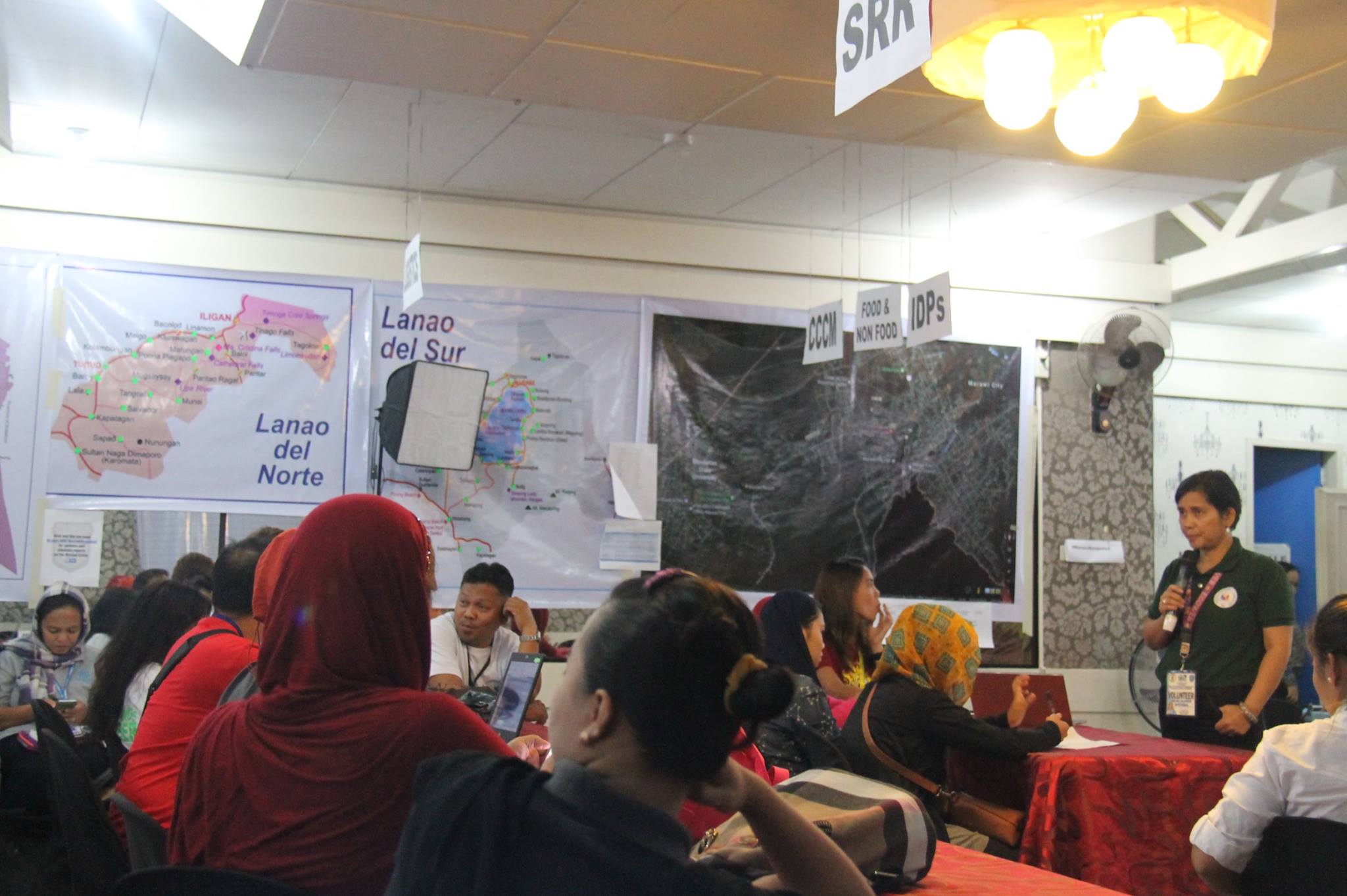
Global study on protracted internal displacement
A new global study commissioned by the United Nations Office for the Coordination of Humanitarian Affairs (OCHA), Breaking the Impasse: Reducing Protracted Internal Displacement as a Collective Outcome, comes at a meaningful time when the numbers of those repeatedly displaced by over four decades of conflict in Mindanao are steadily increasing and is underscored by the situation in Marawi. The study highlights the need for a new approach – using collective outcomes to end or reduce vulnerability for IDPs and move towards durable solutions – and offers concrete recommendations to guide Governments, humanitarian and development organizations and donors. Case studies from Colombia, the Democratic Republic of Congo (DRC), the Philippines, Somalia, and Ukraine all illustrate the challenges of attaining sustainable return, local integration or relation for those who have been displaced either by disaster or conflict
Recommendations
While the study proposes an approach that allows IDPs to reach self-sufficiency sooner, it also make recommendations to key stakeholders such as governments, donors, and the United Nations:
In protracted situations, internal displacement is primarily a development and political challenge. It may require continued humanitarian response in displacement-affected communities, but shouldn’t be the solution alone.
IDPs should not have to wait until a conflict is fully resolved. With coordinated assistance, they can begin rebuilding their lives in accordance with the fundamental standards of human rights and dignity. In particular, efforts should be made to help IDPs secure better access to livelihood opportunities, adequate housing with security of tenure, and basic services to reduce aid dependency.
Cooperation across humanitarian, development and political must be systemized and strengthened. It is critical to achieve collective outcomes that address protracted internal displacement and prevent new displacement from becoming protracted. Combining efforts to analyse the needs, vulnerabilities and capacities of IDPs and their hosts, identifying the reasons why displacement is protracted, and agreeing on and implementing strategic, clear, quantifiable collective outcomes gives the displaced a genuine opportunity to rebuild their lives.
Participation of IDPs and host communities. It is critical to ensure that IDPs and their hosts are consulted and participate in decisions affecting them, including with respect to planning and implementation of interventions that focus on their specific needs. Programming should use area-based approaches that prioritize investments for IDPs and host communities in livelihoods, housing with security of tenure, and access to basic services.
Addressing protracted internal displacement is not a purely humanitarian concern. The traditional approach – prioritizing responses that meet short-term humanitarian needs – has made achieving durable solutions a challenge worldwide. This increasing trend of protracted displacement calls for moving beyond care and maintenance to rebuilding lives, with humanitarian, development, peace and security and disaster-risk reduction actors at all levels having a distinct and essential role to play.
Launch of an interactive Mindanao Displacement Map
An interactive displacement map that provides an overview of displacement incidents in Mindanao, Philippines from January 2012 to June 2017 was launched simultaneously with the protracted internal displacement study. The displacement incidents range from armed conflict to natural hazards such as floods, earthquakes and typhoons. The collaborative project between UNHCR and OCHA combines data collected by UNHCR from the field, Protection Cluster members and official reports from the Philippine government and Mindanao local authorities, in an interactive map that will be hosted on Humanitarian Data Exchange (HDX). HDX is an open platform hosted by OCHA for sharing data, and the map is available at: https:// data.humdata.org/organization/ocha-philippines.
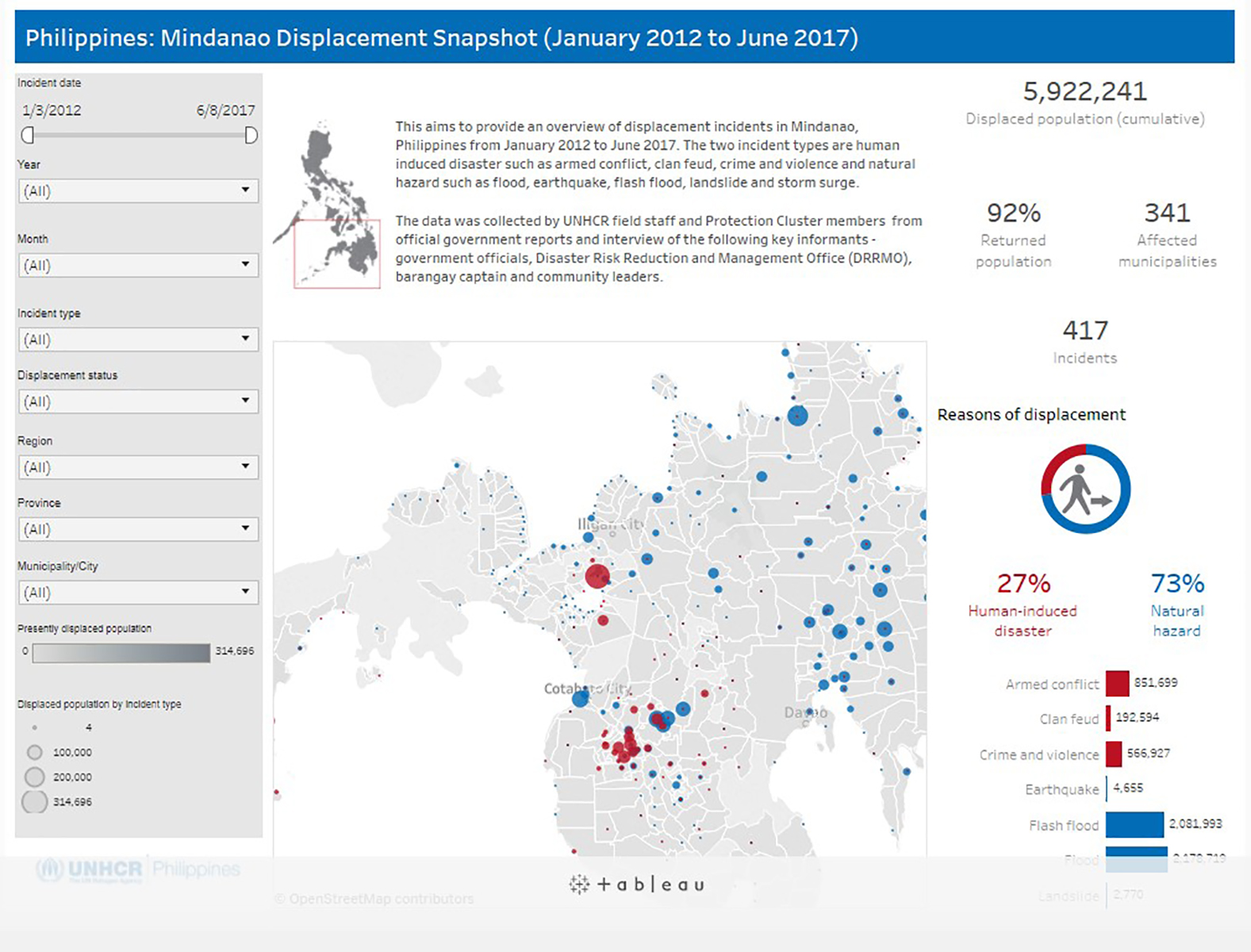
IDPs should not have to wait until a conflict is fully resolved. With coordinated assistance, they can begin rebuilding their lives in accordance with the fundamental standards of human rights and dignity.
An interactive displacement map that provides an overview of displacement incidents in Mindanao, Philippines from January 2012 to June 2017 was launched simultaneously with the protracted internal displacement study.
Using gender indicators in hazard and vulnerability mapping
Identifying the most vulnerable communities in the event of a disaster is essential to effective preparedness. Several initiatives are underway to identify these vulnerable areas using different types of hazard maps and methodology. Among the best known are Project NOAH, under the Philippine Department of Sciences and Technology and the Netherlands Red Cross Community Risk Assessment project. In addition, OCHA Philippines is also working with the National Aeronautics and Space Administration (NASA) DEVELOP, part of NASA’s Applied Science Program to create cyclone vulnerability maps of the Philippines with a special focus on gender issues, such as the specifc needs of single mother households.
Gender Vulnerability
The first phase of the NASA DEVELOP uses historical tropical cyclone tracks, land slope data and disaggregated demographic data to produce hazard and vulnerability maps which combine these data to assess gender vulnerability and identify areas of greatest vulnerability. The pre-disaster database compiled by OCHA with data from different government agencies was used for the demographic data.
The project was conceptualized to further elevate gender equality programming in preparedness and response and what it means for decision makers, planners and sectoral experts. It aims to demonstrate the need to include disaggregated sectoral information like number of child-headed households into highlighting the importance of targetting the different needs of women, men, boys and girls in pre-crisis planning.
Final output
In estimating vulnerability by gender, the indicators were grouped into two variable sets. Natural variables includes tropical cyclone tracks, housing materials and number of households. Demographic variables include single female-headed households, disability and sanitation. It was noted that while natural variables show greatest vulnerability on the eastern side of northern Luzon, the demographic variables vulnerability remained to the south in Mindanao.
Using the combination of natural hazard variables and demographic variables with focus on gender-related indicators, the project was able to identify areas of the Philippines that are vulnerable and would need more attention in the provision of gender related support in case of emergencies. The final report will be available after the second phase of the project is completed in September 2017.
The project was conceptualized to further elevate gender equality programming in preparedness and response and what it means for decision makers, planners and sectoral experts.
Engaging potentially at-risk communities in preparation for a 7.2-magnitude earthquake
A series of community consultations from May to June were held in 10 pilot barangays in Metro Manila. The aim was to identify life-saving and evolving needs of a potentially at-risk population prior to the “big one” — a 7.2-magnitude earthquake that may severely affect the National Capital Region.
The pre-crisis information mapping and consultation are critical to the process of planning, allowing humanitarian actors to identify what minumum resources are necessary to augment or complement the capacities of the national government.
Mario Cruz, chairman of Barangay Catmon in Malabon City, stressed in a consultation interview that “when the big one happens, our barangay can only provide a limited amount of food assistance to our thousand households. We don’t have enough resources to support everyone and we may not be able to address shelter or accommodate neighbouring barangays. Despite of our preparedness activities, the reality is our barangay cannot support all needs.”
Supporting the Metro Manila earthquake contingency plan
The pre-crisis information mapping and consultation is part of the Humanitarian Country Team’s Metro Manila earthquake contingency planning and ongoing preparedness and risk reduction initiatives by the local government. The mapping activity, organized by OCHA, informs the contingency planning process, validating the projections of key immediate needs of the affected population before the disaster strikes. Factoring in the community's perpectives through the pre-crisis survey is what makes this earthquake contingency planning process unique from previous ones, which only had the participation of disaster managers, key officials and responders. Giving the community a voice in the planning process is critical to a more inclusive outcome.
Community of Practice (CoP) on Community Engagement members Action Against Hunger, Care/ACCORD, Community and Family Services International (CFSI), Handicap International, HelpAge/COSE, IFRC, the Philippine Red Cross, NASSA/ Caritas, SkyEye and World Vision joined the mapping consultation.
“We are happy to be part of this since we’re accustomed to conducting an assessment or consulting affected communities after a particular emergency as part of the CoP. For this initiative, we’re given opportunities to truly reflect on the voices of at-risk communities and also validate the core strategies of community engagement, which is to have a more inclusive and diverse approach in understanding the actual needs of the local communities,” Aivon Guanco from World Vision said.
Respondents from vulnerable communities
More than thousand respondents were consulted and interviewed in cities of Quezon and Valenzuela in the north, Pasig and Marikina in the east, Manila and Malabon in the west and Pasay in the south of Metro Manila.
Aside from household or family surveys, a series of focus group discussions were conducted with the most vulnerable sectors in urban areas such as persons with disability, elderly, women and children. Members of the barangay councils and other local organizations were the key informants.
Key immediate needs identified by the community
Food, water, sanitation, health, nutrition, shelter, protection, household items, livelihood concerns, and cash are among the key immediate needs that were identified from the consultation process in the selected areas in Metro Manila.
Respondents verified that access to the right information, preferred communication channels, and established accountability mechanisms among priorities identified based on a scenario of 72-hours, one week, and one to six-month period after the earthquake. The most urgent concern of women (including pregnant women and lactating mothers), elderly, single parents, persons with disability and children were their safety and wellbeing in case of a prolonged stay in an evacuation centre. Critical to their welfare would be the capacity of a barangay to respond in the crucial 72 hours after the emergency. Succeeding days or weeks would have more challenges such as damage to life-saving infrastructures such as hospitals.
In a focus group discussions in Valenzuela City, Juvy Antivola, 74, shared her concern: “I'm too old, fragile, and dependent. It's difficult for all if our safety is not guaranteed. I am not sure if many people like me can sustain the difficult conditions of being displaced after an earthquake. Hopefully, enough aid will be around when it is needed most."
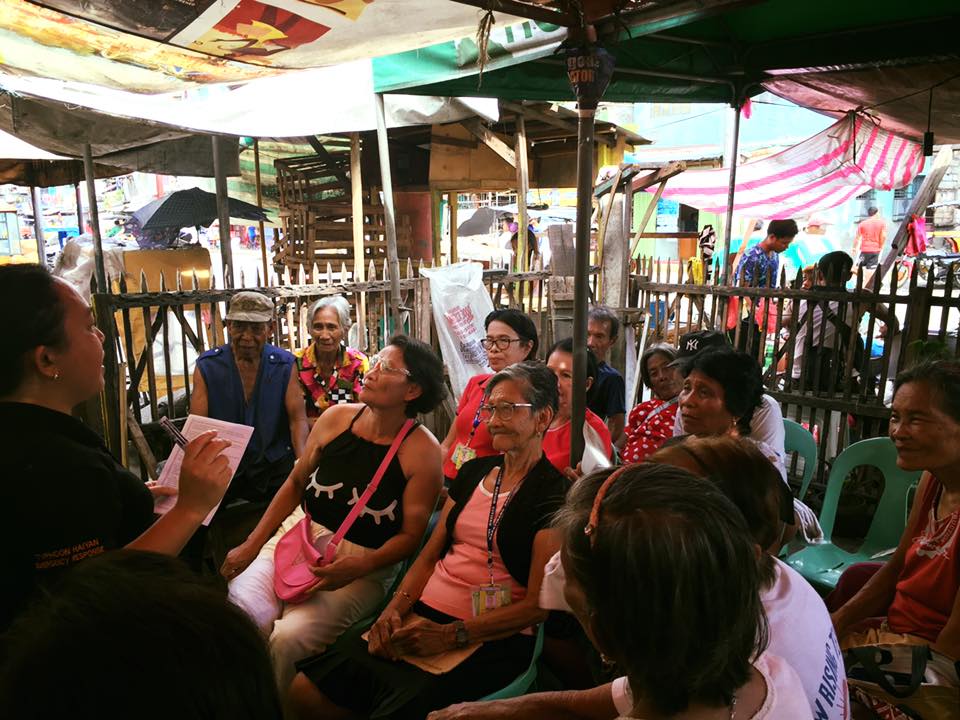
The most urgent concern of women (including pregnant women and lactating mothers), elderly, single parents, persons with disability and children were their safety and well-being in case of a prolonged stay in an evacuation centre.